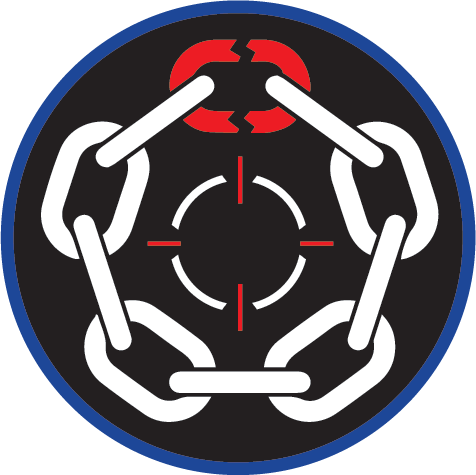
Supply Chain and Third-Party Exposure
Unveiling Your Supply Chain's Weaknesses: A Deep Dive with ThreatNG
The ThreatNG Supply Chain & Third-Party Exposure Score goes beyond traditional assessments. It leverages ThreatNG's robust security suite, encompassing External Attack Surface Management (EASM), Digital Risk Protection (DRP), and expansive intelligence sources. This comprehensive approach dives deep into your entire supply chain ecosystem, analyzing your organization and the technologies your vendors and partners use. By examining domain configurations (Domain Intelligence), software versions (Technology Stack), and cloud or SaaS services employed (Cloud and SaaS Exposure), the ThreatNG score paints a holistic picture of your third-party exposure. This proactive approach empowers businesses to identify and address potential security risks within their supply chain before they become exploited by attackers.
ThreatNG Supply Chain & Third-Party Exposure Score: Severity Levels Explained
The ThreatNG Supply Chain & Third-Party Exposure Score utilizes a letter grading system (A-F) to communicate the severity of security vulnerabilities within your organization's vendor ecosystem. This grading system aligns with the ThreatNG Digital Presence Triad, providing a clear picture of the risk based on three key factors:
Feasibility
This assesses the ease with which attackers could exploit vulnerabilities within your third-party vendors or partners to access your systems or data. Here's how the investigation areas contribute to the Feasibility score:
Outdated Technologies: ThreatNG identifies obsolete software versions, libraries, or plugins vendors use (Technology Stack). Outdated technologies often have known vulnerabilities that attackers can exploit.
Misconfigured Domains: Domain Intelligence analyzes vendor domain configurations, looking for weaknesses like weak encryption protocols, exposed services, or many subdomains that increase the attack surface.
Insecure Third-Party Technologies: Cloud and SaaS Exposure investigates vendors' cloud and SaaS services. Free or low-cost services with lax security practices pose a higher risk.
Believability
This evaluates the likelihood of attackers targeting a specific vendor or partner within your supply chain to gain access to your organization. Here's how ThreatNG considers Believability:
Vendor Industry: Vendors operating in high-risk industries (e.g., finance, healthcare) may be more attractive targets due to the potential for valuable data.
Vendor Security Posture: ThreatNG incorporates intelligence about a vendor's past security incidents or the overall security reputation of their industry.
Your Relationship with the Vendor: The level of access a vendor has to your systems or data influences the potential impact of a breach.
Impact
This considers the potential consequences of a successful cyberattack on a vulnerable third party within your supply chain. Here's how Impact is determined:
Access Level of the Vendor: Vendors with deeper access to your systems or critical infrastructure pose a higher risk if compromised.
Potential Disruption: A successful attack could disrupt critical operations or services the vendor offers, impacting your business continuity.
How the Grades Translate to Severity
A (Low Severity)
Your supply chain exhibits strong security practices. Vendors have limited attack surface vulnerabilities (Domain Intelligence), secure technology stacks (Technology Stack), and minimal reliance on risky cloud or SaaS configurations (Cloud and SaaS Exposure). Additionally, the vendors you partner with operate in low-risk industries and have limited access to your critical systems or data.
B (Moderate Severity)
While some weaknesses might be present within your supply chain (e.g., outdated software used by a vendor), the overall likelihood of these vulnerabilities being exploited and the potential impact are moderate.
C (Medium Severity)
This indicates a balance between the ease of exploiting vulnerabilities within your vendor ecosystem (Feasibility), the likelihood of attackers targeting specific vendors (Believability), and the potential consequences of a successful attack (Impact). Remediating these moderate risks by working with your vendors to improve their security posture is recommended.
D (High Severity)
Your supply chain shows significant vulnerabilities, with vendors having exploitable weaknesses identified through Domain Intelligence, Technology Stack, and Cloud and SaaS Exposure modules. There's a moderate chance of attackers targeting these vendors, and the potential impact of a successful attack could be significant. Urgent action is needed to address these vulnerabilities by collaborating with vendors and potentially reassessing critical partnerships.
F (Critical Severity)
This signifies the highest risk scenario. Your supply chain has critical vulnerabilities across multiple vendors, and attackers are likely to target it due to the vendor industry or their access to your systems. A successful attack could have devastating consequences involving sensitive data breaches or operational disruptions. Immediate action is crucial to address these vulnerabilities, including reevaluating vendor relationships and implementing stricter security controls within your supply chain ecosystem.
The ThreatNG Advantage
Considering all three factors (Feasibility, Believability, and Impact), the ThreatNG score goes beyond a simple vendor risk assessment. It prioritizes supply chain risks based on real-world scenarios, allowing you to focus resources on the areas with the most significant potential for a successful attack impacting your organization. This focus on the Digital Presence Triad helps organizations achieve optimal supply chain security outcomes by first addressing the most critical vulnerabilities.

Strengthening Your Digital Ecosystem: Actionable Insights from ThreatNG's Supply Chain Score
In today's interconnected business landscape, a secure supply chain is no longer a luxury; it's a necessity. The ThreatNG Supply Chain & Third-Party Exposure Score transcends traditional vendor risk assessments by offering a wealth of actionable insights fueled by a powerful combination of data and intelligence. This empowers organizations to manage supply chain vulnerabilities and safeguard their digital ecosystem proactively. Here's how ThreatNG delivers superior value:
Actionable Insights and Data-Driven Objectivity
ThreatNG goes beyond simply identifying potential vulnerabilities within your vendor network. The score analyzes your organization and supply chain by leveraging External Attack Surface Management (EASM), Digital Risk Protection (DRP), and vast intelligence repositories. This comprehensive view paints an objective picture of your third-party exposure. With this data-driven approach, you gain actionable insights that pinpoint specific weaknesses in domains (Domain Intelligence), outdated technology stacks (Technology Stack), or risky cloud and SaaS configurations (Cloud and SaaS Exposure). This allows you to prioritize remediation efforts and collaborate with vendors to strengthen your supply chain security posture.
Continuous Monitoring and Improvement
ThreatNG isn't a one-time assessment. Its continuous monitoring capabilities provide insights into your supply chain's security posture. This allows you to track progress on addressing vulnerabilities identified with vendors, identify emerging threats within the supply chain landscape (e.g., new attack techniques targeting specific technologies), and measure the effectiveness of your collaborative security initiatives over time. This empowers a proactive approach, enabling you to continuously adapt and improve your security posture across your entire digital ecosystem.
Comparison and Benchmarking
The ThreatNG score allows for comparison and benchmarking against industry standards or your historical data. This comparative analysis helps you understand how your supply chain security posture stacks up against competitors and measures the effectiveness of your vendor risk management efforts over time. This can reveal industry trends and identify areas where your supply chain might lag behind best practices.
Actionable Recommendations
The score doesn't just highlight problems; it provides clear, actionable recommendations for addressing supply chain vulnerabilities. These recommendations are tailored to the specific details identified through ThreatNG's modules, including specific outdated technologies used by vendors (Technology Stack), misconfigurations discovered in domains (Domain Intelligence), or high-risk cloud or SaaS services employed (Cloud and SaaS Exposure). This empowers you to prioritize resources, collaborate with vendors on remediation plans, and focus your efforts on the areas that will have the most significant impact on reducing your overall supply chain risk exposure.
Clear and Transparent Scoring
ThreatNG's scoring system is clear and transparent. Because it is substantiated by the results of EASM, DRP, and extensive intelligence repositories, the score provides a verifiable and objective assessment of your supply chain risk exposure. This transparency fosters trust with your vendors and empowers stakeholders to confidently assess your commitment to a secure digital ecosystem. By leveraging ThreatNG's data-driven insights, organizations can collaborate effectively with vendors, improve their overall supply chain security posture, and achieve superior business outcomes.

Unveiling Your Organization's Digital Landscape: A Spectrum of ThreatNG Security Ratings
The ThreatNG Supply Chain & Third-Party Exposure Score is a powerful tool, but it's just one piece of the puzzle within ThreatNG's comprehensive digital risk assessment suite. This suite offers a broader spectrum of Susceptibility and Exposure ratings that paint a holistic picture of your organization's digital security posture, vendors, and entire supply chain. Here's why a comprehensive approach matters:
Interconnected Vulnerabilities
A weakness in one area can create a domino effect. For instance, a data leak (Data Leak Susceptibility) could damage your brand reputation (Brand Damage Susceptibility). ThreatNG's suite helps identify and address these interconnected risks.
Targeted Risk Management
Assessing various vulnerabilities across different categories allows you to gain a more comprehensive understanding of your risk landscape. This allows you to tailor your security measures to address the most critical threats, such as phishing attempts (BEC & Phishing Susceptibility) or web application vulnerabilities (Web Application Hijacking Susceptibility).
Supply Chain Security
Today's businesses rely on complex ecosystems. ThreatNG's assessments extend beyond your organization, providing visibility into the security posture of your vendors and partners (Supply Chain & Third Party Exposure) alongside potential exposures like subdomain takeover vulnerabilities (Subdomain Takeover Susceptibility). This empowers you to mitigate risks across your entire digital supply chain.
ThreatNG's Spectrum of Security Ratings:
BEC & Phishing Susceptibility
Assesses the risk of falling victim to Business Email Compromise and phishing attacks.
Brand Damage Susceptibility
Evaluate the likelihood of negative brand impacts due to security incidents, financial violations, or social responsibility concerns.
Breach & Ransomware Susceptibility
Assesses the likelihood of falling victim to ransomware attacks, considering exposed ports, known vulnerabilities, and dark web presence
Mobile App Exposure
Assesses mobile app vulnerabilities, like exposed API keys, to identify supply chain and third-party risks that may affect the organization.
Cyber Risk Exposure
This section provides a broad view of external attack surface vulnerabilities, encompassing the technology stack, cloud environments, and code exposure.
Data Leak Susceptibility
Measures the potential for data breaches based on cloud configurations, SaaS usage, and code repository security.
Non-Human Identity (NHI) Exposure
Quantifies an organization's vulnerability to threats from leaked API keys, service accounts, and system credentials, which are often invisible to internal security tools.
ESG Exposure
Evaluate the organization's environmental, social, and governance practices to identify potential security risks.
Subdomain Takeover Susceptibility
Identifies weaknesses in subdomain configurations that could allow attackers to take control.
Web Application Hijacking Susceptibility
Analyzes web applications for vulnerabilities attackers could exploit.

Security Ratings Use Cases
ThreatNG is a security rating platform enabling businesses to evaluate and monitor their security posture and that of their third-party vendors. By leveraging our extensive security information database, ThreatNG provides valuable insights into potential vulnerabilities and risk exposure, enabling organizations to take proactive measures to strengthen their security defenses. This section will explore some use cases where ThreatNG's security ratings can help organizations better understand their security posture and mitigate risk.




























